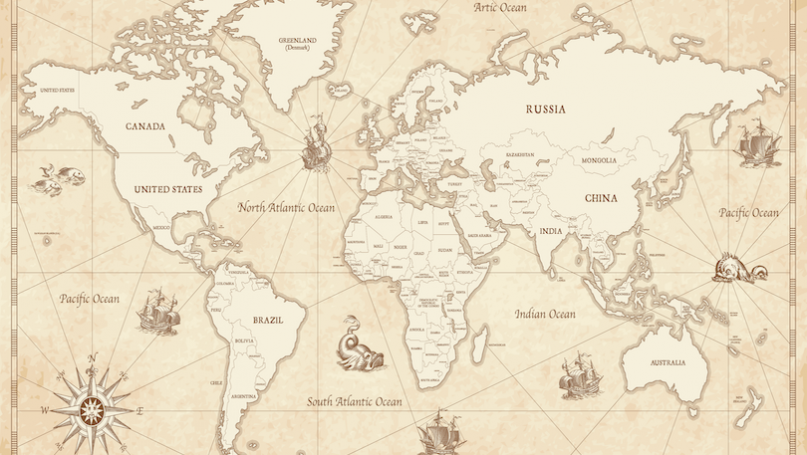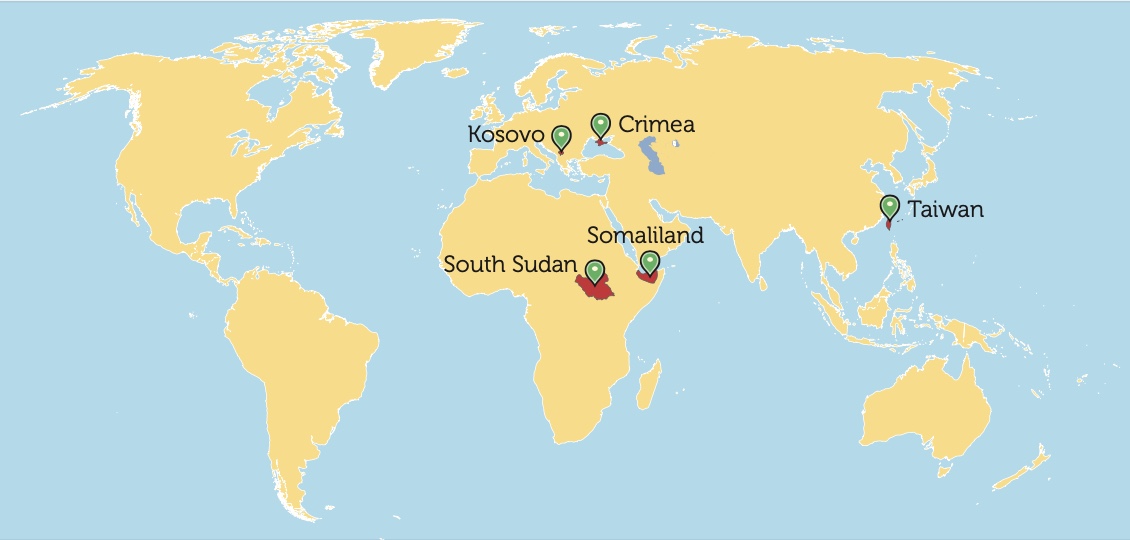
This feature is part of the online resources to accompany the textbook Foundations of International Relations.
‘Nation-state’ is a compound noun that joins two separate political entities together. A ‘nation’ is a group of people who share many things in common, such as language, territory, ethnicity or culture. Typically, a nation is forged over a longer period of history and shared experiences. When that nation is ruled by one system of governance, a ‘state’, the two join and form a ‘nation-state’. A state is a set of institutions, with a defined leadership, that has uncontested authority over the nation (the people). This authority is superior to any local, federal or regional government structures, which exist only through the consent of the state. A state’s power is typically expressed in political, military and legal power – but it can also include other categories such as religion. Historically, states came to rule over nations of people for many reasons, and they have taken many forms through history – often through patterns of domination rather than consent. But, taken broadly, it is most useful at this early stage to see establishing a state as a compromise that allows a nation of people to live under defined shared rules and structures, and thereby achieve a basic sense of security that allows their shared culture to endure in an insecure world.
When you look at a map of the world today all the earth’s landmasses are divided by lines (borders). Each of these borders are made (and remade) through historical events reflecting the key ordering principle of our global system – ‘sovereignty’ – which must be in place for a people to be recognised as a nation-state. Sovereignty has two benchmarks, both of which must exist simultaneously. First, there must be no major internal competition over who or what rules the territory. In practice this could be a parliament (or a similar set of institutions) in which power is regularly transferred to different elected officials. Or, it could be a monarch or dictator who rules until they are succeeded in some way by an equivalent figure. Second, there must be no significant external competition for that people’s territory. In practice this means that no overseas power claims ownership.
In practice, sovereignty is fluid. For example, should a state be attacked by another (an external competitor) it may result in that state being absorbed into the aggressor’s territory should they lose. In the modern day this is uncommon, but not unheard of. For example, Russia ‘annexed’ Crimea – part of Ukraine – in 2014. Additionally, if a group of people within a state start a movement (an internal competitor) and succeed this may sometimes create a differently composed state (carrying a new name and/or a new flag) occupying the same territory. We can see this in the case of China in 1949, which became the People’s Republic of China, and later in Iran in 1979, which became the Islamic Republic of Iran – both after successful revolutions. In these cases, other states gradually recognised the sovereignty of the new leadership as the internal competition had been settled. Finally, sometimes groups of people within states seek to break away and form an entirely new state. This occurred most recently when South Sudan seceded (legally broke away) from Sudan. As the existing state of Sudan did not contest this (removing the factor of internal competition) and no external competitor existed, South Sudan became the world’s newest nation-state in 2011.

There are territories often represented on maps which are described by terms such as ‘self- declared’ or ‘partially recognised’ because the two benchmarks of sovereignty are not yet fulfilled due to ongoing internal or external challenges. Among others, these include Taiwan, Kosovo and the Republic of Somaliland.
Text adapted from McGlinchey, Stephen. 2022. Foundations of International Relations. London: Bloomsbury.
Below is a collection of multimedia and textual resources that help unpack, and explain the importance of sovereignty and the nation-state.
Sovereignty Explained
10-minute introduction into the concept of states and sovereignty
Why Countries Exist: The Rise of the Nation State in 6 Minutes
This video shows the borders and populations of each country in Europe, for every year since 400 BC, demonstrating how the modern state system eventually evolved in Europe.
Textual material
The Stanford Encyclopedia of Philosophy has a detailed entry on the deeper roots of the term ‘sovereignty’.
Britiannica has a useful entry on the meaning of the term ‘nation-state’.
Erik Ringmar details the formation, and impact, of the European Westphalian order in his book chapter ‘The Making of the Modern World‘.
Matt Gordner considers Islamic State’s Challenge to (Post-)Westphalian ‘Order’ in a book chapter. Hope Lozano Bielat explores a similar theme.